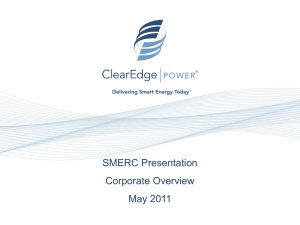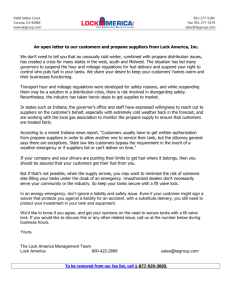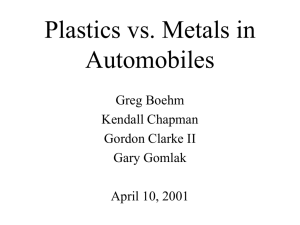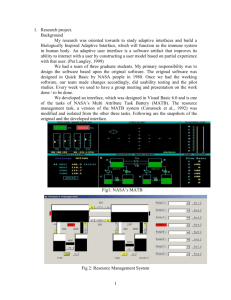Zinc-Copper Battery (with Salt Bridge or U
advertisement
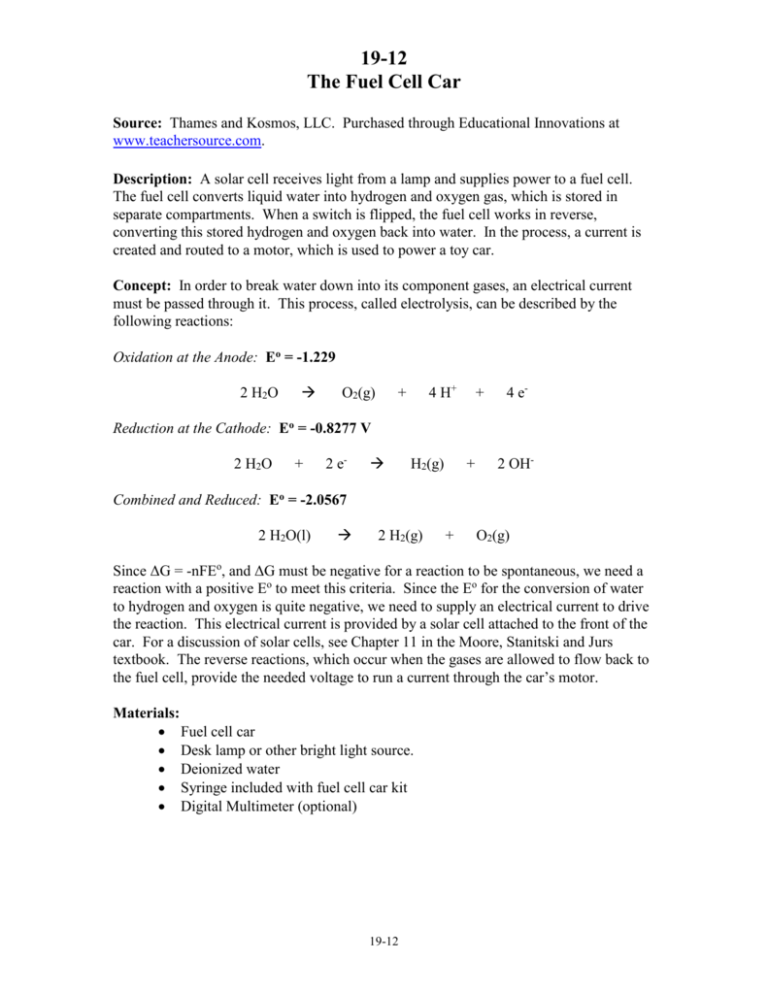
19-12 The Fuel Cell Car Source: Thames and Kosmos, LLC. Purchased through Educational Innovations at www.teachersource.com. Description: A solar cell receives light from a lamp and supplies power to a fuel cell. The fuel cell converts liquid water into hydrogen and oxygen gas, which is stored in separate compartments. When a switch is flipped, the fuel cell works in reverse, converting this stored hydrogen and oxygen back into water. In the process, a current is created and routed to a motor, which is used to power a toy car. Concept: In order to break water down into its component gases, an electrical current must be passed through it. This process, called electrolysis, can be described by the following reactions: Oxidation at the Anode: Eo = -1.229 2 H2 O O2(g) 4 H+ + + 4 e- Reduction at the Cathode: Eo = -0.8277 V 2 H2 O + 2 e- H2(g) + 2 OH- Combined and Reduced: Eo = -2.0567 2 H2O(l) 2 H2(g) + O2(g) Since ΔG = -nFEo, and ΔG must be negative for a reaction to be spontaneous, we need a reaction with a positive Eo to meet this criteria. Since the Eo for the conversion of water to hydrogen and oxygen is quite negative, we need to supply an electrical current to drive the reaction. This electrical current is provided by a solar cell attached to the front of the car. For a discussion of solar cells, see Chapter 11 in the Moore, Stanitski and Jurs textbook. The reverse reactions, which occur when the gases are allowed to flow back to the fuel cell, provide the needed voltage to run a current through the car’s motor. Materials: Fuel cell car Desk lamp or other bright light source. Deionized water Syringe included with fuel cell car kit Digital Multimeter (optional) 19-12 Procedure: Before Class: The demonstrator will prepare the car by filling the fuel cell and tank storage area with water as described in the Thames and Kosmos lab manual included with the car kit. During class: Angle the solar panel on the car towards the desk lamp, with the switch on the car facing in the “FUEL” direction. Leave the panel far enough from the lamp so that the heat cannot damage it, but close enough so that there is plenty of direct light. You will soon be able to see bubbles of gas traveling from the fuel cell towards the gas tanks. After 5-10 minutes, the gas tanks will be completely filled. However, it is possible to run the motor with only a small amount of gas in the tanks. It is recommended that you allow the tanks to fill at least ¼ of the way before attempting to power the car. When a sufficient amount of gas has been produced, flipping the car switch in the “DRIVE” direction will cause the front wheels to start turning. It is recommended that the front axle be rotated so that the car can drive in circles. If the gas tanks are full, the car will run for about 5 minutes without refueling. If desired, a digital multimeter can be provided to measure the voltage produced while the solar panel is exposed to the desk lamp. 19-12





